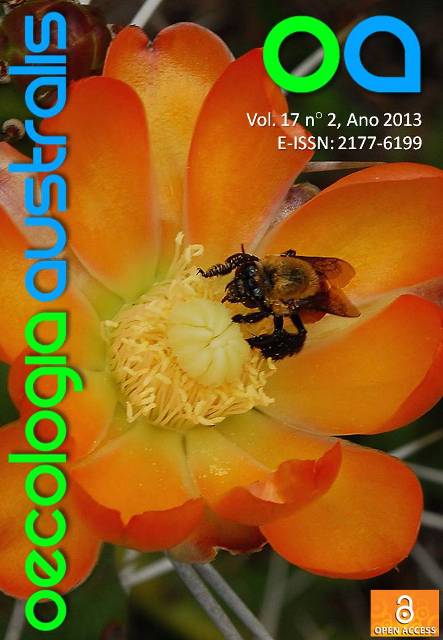TROPICAL TADPOLE ASSEMBLAGES: WHICH FACTORS AFFECT THEIR STRUCTURE AND DISTRIBUTION?
Keywords:
estrutura das assembléias, partilha de recursos, nicho, fatores bióticos, fatores abióticos, fatores históricosAbstract
Tropical tadpoles may occur in a range of aquatic habitats, from tree holes (e.g., fitolimns), to permanent ponds and streams. Thus, tadpoles are exposed to a different sort of biotic and abiotic factors, according to the habitat they develop, and these factors may also vary over time. What are these factors? What are their relevance for the distribution of tadpole species and local assemblages? How do they affect the structure of tadpole assemblages? In this review, we explore these questions and recognize some trends regarding the factors influencing tropical tadpole assemblages. We can recognize at least nine major trends regarding the distribution and structure of tropical tadpole assemblages: (1) stream size and microhabitat diversity are important abiotic features influencing species richness and composition; (2) in ponds, the permanence gradient (e.g., hydroperiod), and the heterogeneity of habitat are the main factors modeling tropical tadpole assemblages; (3) species composition seems to be a more relevant assemblage parameter than species richness and should be first considered when planning conservation of both pond and stream-dwelling anurans; (4) predation seems to be the most important biotic interaction structuring tropical tadpole assemblages, with vertebrate predators (e.g., fishes) being more voracious in permanent habitats, while invertebrates (e.g., odonate naiads) are the most important in temporary ones; (5) tadpoles may play a regulatory effect preying upon anuran eggs and recently hatched tadpoles (6) microhabitat use varies in function of breeding habitat choice by adults, presence of predators, phylogeny, stage of development and heterogeneity of the habitat; (7) historical factors restrict the breeding habitats that species may use, and impose behavioral and physiologic constrains; (8) temporal variation in biotic (e.g., risk factors) and abiotic factors (e.g., rainfall distribution), and the reproductive patterns of the species may interfere in the structure of tropical tadpole assemblages, and (9) food resource partitioning in tadpole assemblages may both be or not linked to microhabitat occupation, feeding behavior, and morphology. Future efforts regarding the study of tadpoles should contemplate assemblages associated with streams, and experimental studies.Downloads
Additional Files
Published
2017-02-21
Issue
Section
Articles


